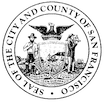Open Source Voting System Project Recommendations
(Approved by OSVTAC on March 14, 2019.)
Last posted: June 9, 2019
-
Introduction & Table of Contents (for multi-page version)
-
Single-page version (long, can be used for printing)

This work is licensed under a
Creative
Commons Attribution-ShareAlike 4.0 International License.
For copyright and attribution information for this work, see
this section. The source files for the text can be found on
GitHub here.
9. FAQ
1. Is open source software more or less secure than proprietary software?
Independent studies have shown that, in general, open source software is neither more secure nor less secure than proprietary software (see for example Synopsys’s “Coverity® Scan Open Source Report 2014”). Both secure and insecure open source software can be written. Similarly, both secure and insecure proprietary software can be written.
A key difference though is that, because it is publicly viewable, claims about the security of open source software can be independently verified, and by anyone (provided they have the necessary skills and time). With proprietary code, such claims can be based only on trusting those who are able to view the code.
The security of a given piece of software is primarily a function of how well the software is written. It does not (and should not) depend on keeping the code secret. The idea that software can be made secure by keeping it secret is an idea known as “security by obscurity” and is widely rejected in the security community.
Open source is already heavily used and relied upon throughout the world for security-critical applications. For example, much of the code that allows the secure transmission of information over the internet is open source.
2. How can members of the public be sure that the open source code is what is actually running on the machine?
The short answer is that there is no way to be certain that the code running on a particular device or computer is what one expects it to be (whether the software is open source or not). This is true even if very careful measures are taken. This is an extremely hard problem to solve and is an active area of research. One reason is that there is no way to be sure that the computer hardware itself can be trusted.
Having said that, good auditing practices that involve randomly checking computer results by hand against the original paper ballots are an adequate countermeasure, provided the audits are done correctly. This is why good audit procedures are important when computers are used to count ballots.
[Answer added: Dec. 14, 2017 meeting.]
3. How much of the code must be open source for the voting system to be considered open source?
Whether something is open source or not is best answered not as a yes or no question but as a matter of degree. For example, a hardware device could be 99% open source except for one small bit of proprietary firmware.
In general, our committee recommends the approach of trying to maximize the amount of open source – i.e. the more open source, the better. There is no fundamental reason why the entire voting system can’t be open source. However, if some portion isn’t open source, it is better if that portion is as small as possible and if it’s for optional functionality rather than required functionality.
Also, if the eventual system does contain any non-open source code, in the spirit of agile, one could work to replace that code with an open source equivalent in later versions of the system.
[Answer added: Dec. 14, 2017 meeting.]

This work is licensed under a
Creative
Commons Attribution-ShareAlike 4.0 International License.
For copyright and attribution information for this work, see
this section. The source files for the text can be found on
GitHub here.
